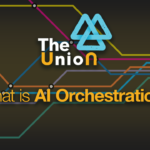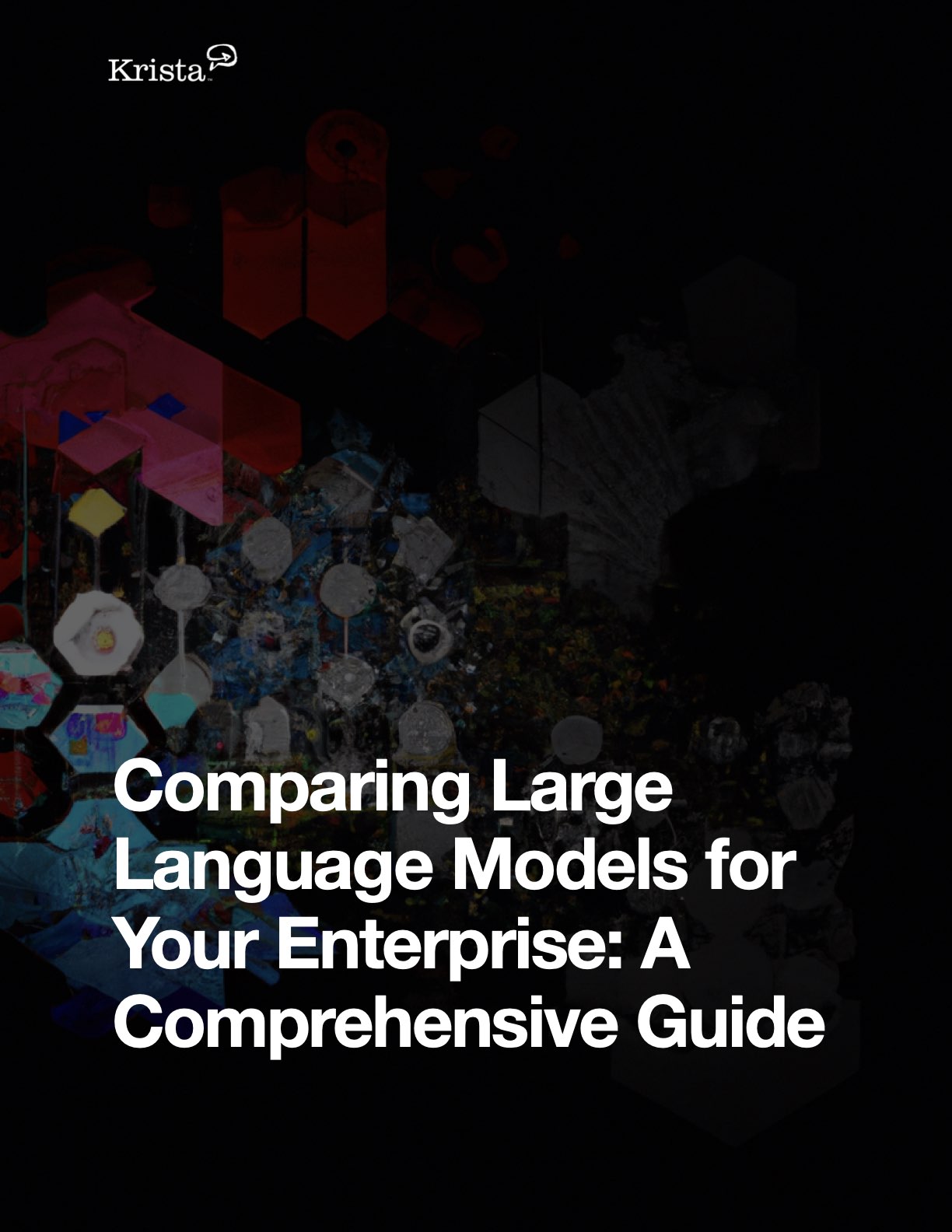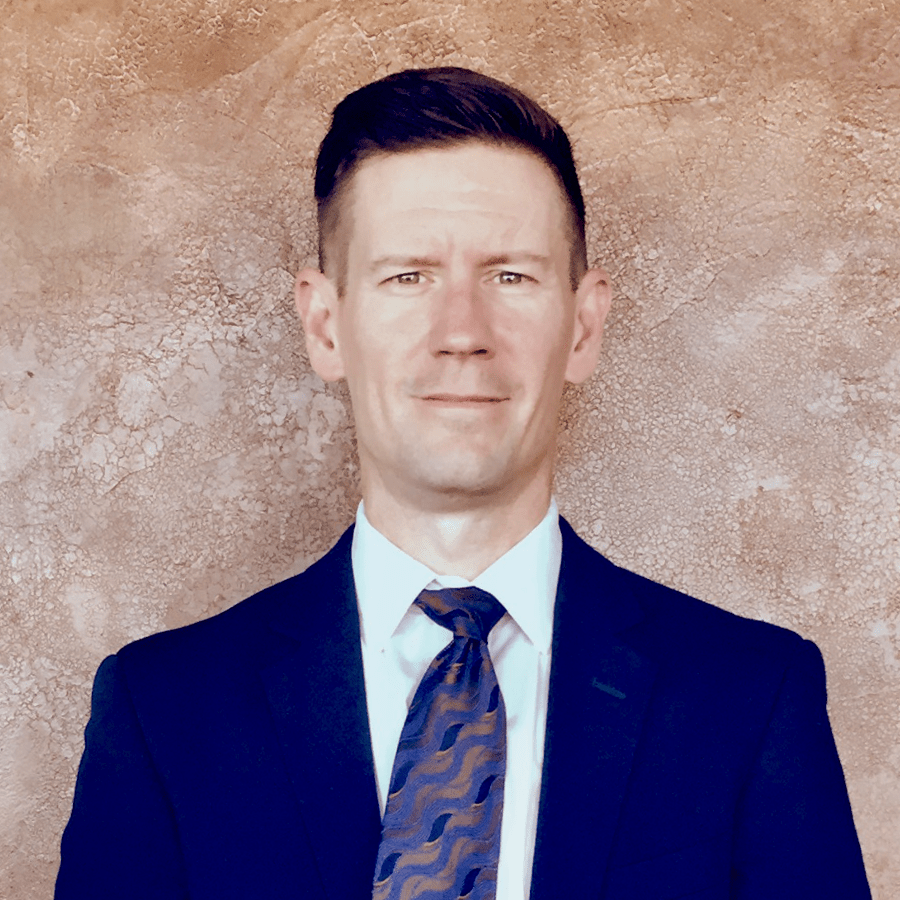Technology innovation is advancing faster than ever before and companies are constantly faced with the challenge of deploying these new technologies to stay competitive. However, the key to a successful digital transformation lies not in forcing employees to adapt to new tools, but rather in tailoring the technology to the unique needs and working styles of the workforce.
Key Points
- Focus on people-centric digital transformation: Consider the unique needs and working styles of employees when implementing new technology, rather than forcing them to adapt to ill-suited tools.
- Understand existing workflows and pain points: Companies should invest time in understanding their employees’ current processes, preferences, and challenges to ensure the technology they implement truly supports and enhances their work.
- Involve employees in the decision-making process: Actively soliciting feedback and involving employees in technology-related decisions can lead to more successful adoption, as they will feel more engaged and valued.
- Technology should be adaptable: Companies must be willing to change the technology they adopt to fit their employees’ needs, rather than expecting employees to change their habits to fit the technology. This flexibility can lead to smoother transitions and increased satisfaction.
- Resistance to change is often a symptom of poorly designed technology: Employee resistance to new technology is often due to the technology not aligning with their existing workflows and processes. By focusing on designing technology around people, companies can overcome this resistance and foster a more engaged and productive workforce.
I recently talked with Amahl Williams about how human psychology, different cultures, and workers’ preferences affect technology adoption. Amahl is an automation practice director at WonderBotz. WonderBotz is a digital transformation consultancy that helps companies use technology to transform workflows and processes to improve business outcomes.
Systems should be easy to use
Amahl and I stressed the importance of understanding how people work and designing systems that take into account their unique needs and behaviors. Technology should meet them where they are rather than change the way they work to fit a software app. This is a departure from the traditional approach of forcing everyone to adapt to new tools to fulfill another organizational task vs. improving customer service. As Amahl points out, “The secret is to make sure that we’re not asking people to change too much, but instead, we’re asking the technology to change.”
Use a people-centric mindset
Amahl explained that businesses should approach digital transformation with a people-centric mindset, focusing on how the new technology will impact the employees who will be using it daily. He emphasized that companies must invest time in understanding their employees’ existing workflows, preferences, and pain points to ensure that the technology they implement is truly designed to support and enhance their work. This approach can lead to a smoother transition, increased employee satisfaction, and ultimately, better business outcomes.
Employees will adopt technology that aligns to their needs
According to Amahl, a common mistake companies make during digital transformation is assuming that employees are resistant to change or unwilling to learn new technologies. In reality, employees are often more than willing to embrace new tools if they see how these tools will make their work easier or more efficient. The challenge lies in ensuring that the technology is designed and implemented in a way that aligns with the employees’ needs and preferences, rather than forcing them to adapt to systems that may be ill-suited to their specific requirements.
To accomplish this, Amahl recommends that companies engage in a continuous dialogue with their employees throughout the digital transformation process. By actively soliciting feedback and involving employees in the decision-making process, businesses can ensure that the technology they adopt is not only cutting-edge but also customized to meet the unique needs of their workforce. This collaborative approach can lead to more successful technology adoption, happier employees, and a more effective digital transformation overall.
In closing
In conclusion, the key to a successful digital transformation lies in adopting a people-centric approach that focuses on understanding and addressing the unique needs and working styles of the workforce. As Amahl highlights in the podcast, companies must invest in learning about their employees’ existing workflows, preferences, and pain points, and involve them in the decision-making process. By prioritizing adaptable technology that aligns with the needs of the people who will be using it daily, businesses can ensure a smoother transition, increased employee satisfaction, and ultimately, better business outcomes. Embracing this mindset helps companies not only stay competitive in the rapidly evolving digital landscape but also fosters a more engaged, satisfied, and productive workforce.
Speakers
Transcription
Scott: Hey everyone, I’m Scott King and I’m here with Amahl Williams, practice leader at WonderBotz. Amahl, how are you doing today?
Amahl: Feeling great, Scott. Happy to be here and looking forward to our chat.
Scott: Glad to hear it. So can you tell us a little bit about WonderBotz and your role there?
Amahl: Yeah, it’s funny. I started my career in RPA back in 2017. If I could ever find it or build the courage to share it with you, I’ll show you my first presentation when I didn’t know what I was talking about. The recruiter asked me to put everything I knew about artificial intelligence down on a deck. I thought, “Let’s see what happens.”
The best part about coming back to your alma mater is that you’ve graduated with some years of experience now. I love coming back, Scott, because when I hit the ground running, directionally we’re aligned. When I started, I was a vice president. Now I’m a practice leader with my own P&L, headcount, platforms, and all the fun stuff. I enjoy the outcome being up to me, but I now warm the entire village. The younger me was all about being a one-man army. Now it’s like, “If the rest of the villagers aren’t with me, how are we going to defeat the rebel hordes?” It’s good to be on this side of the conversation.
What’s great is understanding how much of me needs to get out of the way so that the talented people that work with me can be who they are. There’s no longer this binary of who’s right being more important than what’s right. Let’s meet ahead of time. Let’s make sure we’re answering the questions. Let’s make sure we have owners. And the best part about being 44 is that it’s not me anymore. I don’t have to own all the next steps.
The team is talented and empowered, and our practices grow because of our principles and senior managers. The stronger they are, the healthier our company is. If you look at WonderBotz, it speaks for itself. When I was here, I was employee number 20. Now, I’m employee number 420 something. It’s going pretty well.
Scott: That’s great. I’d love to see that first presentation and hear what you would tell the Amahl of 2017, from both a technical and practical perspective. As for what we wanted to talk about, it’s change management, specifically technical change management. Installing new technology and bringing in new processes that are driven or tangentially driven by technology. That’d be interesting. The boomerang effect, right? Going back to the same employer, which is not that common.
Amahl: Bhavyesh and Steve are culturally of the mindset that it’s possible to do what Oracle and Salesforce do. Automation Anywhere, my partners, definitely do it. To me, it’s like going through undergraduate and graduate school, working for five years, getting an MBA, and then going to work at Microsoft as a CEO.
When I first got here, I was very dependent on other people. Now, I create dependencies for others. My professional anxiety used to heighten as deadlines drew near, but now I scope out deadlines to avoid unnecessary kerfuffle. If I can’t sell the vision, how can someone else act on it? If my sales job is poor, I work towards improving it through interrogation, collaboration, and the Socratic method. In hindsight, I put too much pressure on myself to know the answer to every definition, which led to my burnout. Now I take it from a Wikipedia perspective and I’m more like an almanac.
Almanacs are observations about the past that may inform the future. They provide a disposition that gives you the endurance needed for long-form conversation. Until we agree, nothing happens. We don’t have to agree all the time, but until we come to an accord, the meeting stagnates and the program doesn’t move forward.
Scott: You mentioned long-form conversations earlier, and also talked about how busy everyone is. If I’m an enterprise subject matter expert and I need to make changes, why is that important for an organization to find enabling technology?
The challenge is that people can pick up on the context of long-form conversations, but IT systems don’t work the same way, which creates challenges within organizations. What are some of the common challenges related to being too busy to listen, unless it’s an urgent matter like a sick child? Essentially, it all comes down to prioritization.
Amahl: You’re absolutely right, Scott. We have to be thoughtful. It’s my responsibility to know about the personal situations of employees without overstepping boundaries, such as whether they have kids, pets, or are going through a move. If I were to yell at someone for not being present during a meeting because they’re remodeling their house during the pandemic, I would be creating an unnecessary distraction. So, the question is, is it necessary for us to personalize our communications for everyone on the call, and how can we effectively include those who are not on the call? We can’t just rely on ChatGPT to magically fix everything and sync all our notes to Salesforce.
Scott: I wrote all those questions for you for this podcast, and full disclosure, ChatGPT, the prompt I gave was about half a page long.
Amahl: Well, Scott, you’re an AP honor student, so you behave, right? I’m not worried about the A’s and B’s. It’s the C’s trying to take shortcuts that concern me. Imagine going from writing one sentence a week to writing the Iliad bi-weekly. That could set off a lot of alarms. Some guys won’t post because the character limit on LinkedIn is greater than the feed they get from ChatGPT. It’s like they’re afraid to edit it. There are two types of change personas. One is afraid of obsolescence, and they speak to the program differently. The other hopes to be included. How do I make sure that I’m included? These are two different groups.
Scott: With the first group, the obsolescence group, do they fear being out of a job or that technology will take over? Is that what they talk to you about?
Amahl: Now, that’s a great way to ask it, right? So it’s more about job security, isn’t it? And to me, if we don’t automate, none of the jobs are secure. I’m not trying to be obsequious, but let me take my favorite vertical as an example. At the hospital, if we’re not credit-worthy, if the bond rating decreases, if customer satisfaction is negatively impacted by employee satisfaction, and if we don’t use automation, conversational AI, rostering, and ambulatory, we won’t create the bandwidth for clinicians and physicians to perform at their highest level of certification. It’s not a marketing pitch or a PR campaign.
The goal of automation is threefold: save time, save money, and improve the experience. And the only way to improve the experience is to free up employees to serve. When engagement is rushed, data isn’t accurate, and wait times are longer, people are less likely to take advice, especially in certain income brackets. The longer it takes to get an answer, the less likely people are to move forward with procedures or take advice. They start creating scenarios in their minds about the time, instead of realizing it’s just a matter of resource availability and the complexity of their situation.
Scott: So, you mean they fear for their own health, right?
Amahl: Exactly. And the silence in the room can be deafening, especially for non-native English speakers. When you sit in a room and all you hear is noise, it doesn’t make you confident, it creates anxiety.
Scott: If you’ve ever been thrown into a foreign language environment, it can be overwhelming. People talk, there’s a lot of noise, and they look at you, and point at you. It’s never a good feeling.
Amahl: It’s true, because even our facial expressions are different. For example, we don’t even have the same facial imagery when we communicate. People often don’t realize that there are different cultural influences on our facial expressions and gestures. For instance, the hand gesture for “come here” in Asian culture can look like “go away” to Americans. So, when serving a multicultural population, which is becoming increasingly common, it’s important to be sensitive to these differences. I’m currently working with a significant hospital, but I can’t disclose its name.
The email just came in. People are debating about the use of smart devices in the care practices of the innovative parts of the hospital systems that are required. I’m like, hey guys, if you don’t make it innovative at the fringe, nothing’s going to change the population’s behavior. It’s gotta be very stereotypical here, and my friends are going to beat me up after this, and that’s fine. But if it isn’t cool or slick, flex on my healthcare. I hate to say this right because healthcare is like teeth. If you have bad teeth, nobody knows about it. Keep your mouth closed and cover your face. But the people who go and get their teeth cleaned or whatever, they’re putting jewelry in there.
I think for me one for the physicians we got to get their email we got to get their inboxes sorted. We got to do it. Two for the clinicians we got to automate I hate to with 11 robots minimally just to support them in their administrative functioning. Just the cutting and pasting, not even the prescription writing. And then when it comes time to serve the patients, we have to process them as effectively as possible or the likelihood that they’re gonna be back in our hospital system is very high. Like Scott, if I wait too long to take my prescription what happens? I get another flare-up.
If I can’t read the prescription label, I don’t take it as prescribed. You know how people relapse? They can even do it in their sleep. And imagine waking up in a cold sweat from a relapse, Scott. It’s absolutely terrifying. What really helped me, and also led me to stop playing football, was the way trainers handle concussions on the field. They hold your face and look into your eyes while giving a minute-by-minute recap of what happened after the blunt trauma to your head.
My trainer was Bates. I’ll never forget it. He told me, “You were out for a minute. You got hit in the back of the head. We called a timeout because you lined up facing your teammates instead of the competition.” They helped me up and gave me smelling salts, walked with me, and made sure I was hydrated. And Bates said, “The game is over. We’ve already won. You don’t have to play anymore.” But for me, Scott, my sense of duty was paramount to my identity back then. I don’t know about you, but you seem to have high-performing vibes, not overspending.
Back then, I used to introduce myself as the captain of the football team, a scholar-athlete, and a class president. It was like those titles were synonymous with who I was. But looking back, I realize I was too young to know any better. I won’t even get into my scholarship stars because I was actually better off the field than on it. But Dr. Yan Chao, the Chief Medical Officer at Automation, said one of my favorite lines in a video. He said, “Healthcare is really personal and extremely intimate. And as soon as we forget that, the quality of care degrades.”
Scott: You would think that the most important thing in healthcare is, well, the healthcare part, but I bet if you followed a nurse around all day, or any healthcare worker for that matter, you’d see how much time they spend dealing with different systems. I know all my examples are from the ER, but it’s not just that. Think about how much time they spend entering data into a system, or copying and pasting information, or looking up data that’s not on a smart device. Especially if they don’t want to be innovative and carry a device with them all the time. And they didn’t go to med school for Epic training, right?
It’s interesting because you talked about how different cultures have different mannerisms, but all of ours are still from eons ago. And now we’re asking people to change so much to use this technology. Are we doing it wrong? Are we forcing change too quickly on a system that evolves slowly through time? Technology changes so fast, but people change slowly. Are we approaching this the wrong way?
Amahl: It’s interesting, Scott, how none of the digital natives seem to be restless, while everybody else is.
Scott: Well, that’s because digital natives don’t have the same constraints as everyone else. For example, if we’re talking about social media platforms like Facebook, they’re constantly changing and updating, but there’s never any user revolt because it’s just part of the platform. However, if you were to change something like Salesforce.com from the classic edition to the Lightning edition, then there would be a revolt. In fact, Salesforce rolled everyone back globally because of the backlash.
Amahl: I have to say, Scott, that when I talk about digital natives, I’m particularly impressed with the format that Meta and Facebook use for their interview process. They ask candidates to read something, craft a point of view, build a PowerPoint, and defend it in front of a panel. Some people might say that’s not everything, but for me, it’s a great way to exhibit intellectual rigor and create content that is unique to who you are. Then you go through a voir dire session with your peers who are intellectually curious and interested in understanding your point of view.
I think digital natives have an advantage here, especially if they’re familiar with tools like Canva and the Google Suite. These skills aren’t always part of the curriculum, though. For example, when I teach statistics to my students, I have to be very specific about what I want. There’s no interpretive dance involved in classical training around statistics. It’s all about the formula, the data set, and the outputs.
But when I give a business problem to some of my other students and ask them to solve it, I see the smart kids ask questions like, “How long does it take? Do we have a budget? If we solve it, is it meaningful or actionable?” And of course, “Do I get credit for this towards my grade?”
Scott: How would the 2017 Amahl answer that question? And how will the Amahl of today answer that question? I think it would be a little different.
Amahl: Yeah, Scott, you’re right. I call it white glove service and I kind of laugh. I say, if we don’t do this for you, who’s gonna do it? The customer looks around and says, oh, I don’t know, maybe it won’t get done. But I tell them, hey, treat yourself this time. Treat yourself. You’ve done all the other projects by yourself. Have somebody help you. And then when this works, guess what? Because, I mean, until they get the first project funded, there is no project. Until they get the first campaign started, there is no campaign. Could you do it yourself? Sure. Are you gonna stay at that company after you work 80 hours a week?
Scott: I can work anywhere with just an internet connection. I read an article the other day that stated there are 50 countries that offer a digital work visa, so you can work in any of those countries. It’s interesting, but I’m staying in Texas.
Amahl: Yeah, you guys have some pretty good barbecue down there and college sports.
Scott: There’s plenty of stuff. It’s nicer now than in the summer, right? Late summer gets really hot. That was an interesting tangent, barbecue. I didn’t think that would come up, but let’s get back to change management. If people don’t understand the goal and the outcome and communicate that, the different roles of people have different goals. So some people’s goal is to hang on to their job. Some people’s goal is to provide the best care to the patient in the healthcare industry. The IT goal is to not get too many support requests. It’s like, oh my god, the user revolts. How do you get all these people on board? How do you provide better care for patients while ensuring all these other things happen?
Amahl: It’s about my plumage, Scott. When I come in, my quivers are very decorative and ornate. You cannot rebuild trust. I always make a joke about guys with glasses being in data analytics because they take pride in their eyewear, right? Precision. Across all European cultures and some Northern African ones, the stonecutters and masons would stand up with a proud chest, a smile on their face, and their heads raised high, saying they come from a family of stonecutters.
Our CEO, Steve LaValle, comes from the fancy side of Mount Vesuvius, but his family was stonecutters. Men with trades like stone cutting were capable of creating weapons, housing, fortifications, and more. When I speak to people who are proud of what they do, like those who have chosen to work in healthcare, I talk to them differently. Most people in healthcare are there by choice, not by force. They wouldn’t stay in hospitals or schools with these kinds of compensations, work-life balance, and daily requirements unless they loved it or truly wanted to be there to serve and help people.
Is that 100% of the population? No. If they show up to the meeting, Scott, I am invested in them. And I tell them to let me know their learning style so that I can support and meet them where they are on their personal journey. If they prefer offline conversations because they’re old school, like the Mafias in the movies, I come by and whisper to them, like, hey, let’s have a coffee offline. Teach me about it. I also talk to the leaders and say, hey, there are three parts of the company coming together. I don’t think you guys work together a lot. Whether you agree with that or not, it doesn’t matter. I make sure that the conversation doesn’t become unnecessarily derailed. It’s gotten to a brand.
They will tell me these are your three key stakeholders that we have to keep happy and earn their trust. If we earn their trust, they will give us access to the rest of the organization. So when I hear that, Scott, guess what? I don’t debate it, challenge it, or critique it. I write that woman’s name down, drive down to New Jersey, and spend a week with her in the office. I observe what time she shows up, leaves, has lunch and interacts with her colleagues throughout the building. Because if that woman talks well about Amahl Williams, guess what? Everybody else thinks I’m a great guy.
Scott: Well, you can send me her number, and I’ll call her and tell her how great you are.
Amahl: But I’ll tell you, Scott, for the people who want to get it right, and I do believe a lot of these healthcare professionals, not the IT folks, but the system folks, the ones who memorize all the codes, the ones who are masters of all the systems that have been retired, they know Meditech, Blue Cross Blue Shield, and all of them. They are there because they care. And you know why everyone else is there? Because when they go home, generally, their families celebrate the fact that they are care providers. There is a nobility to higher education and clinical and physician work.
I know it’s true because I was raised in that environment. I worked at a hospital, made lunches, cleaned beds, took folks on their daily sabbaticals, and the promenades, and walked with them. I heard about the veterans and the cats, and you can’t make that up. When you’re in there, healthcare folks know that. I tell them, “Hey, guys, I used to give lunches to 200 beds every day. That was my after-school life. And after that, when I got my IT degree, I worked at the help desk at the Boston Public Health Commission. I do this. I’m in there, Scott.” The vernacular is a part of who I am. My matriarch and my family performed the functions of a dietitian, clinician, and laboratory. We didn’t have physicians because we weren’t that fancy. We were a poor family. But our highest level of certification is an esteemed fellow at Johns Hopkins. Dr. Nichols, my cousin, is in charge of pediatrics there. It doesn’t get a bigger deal than that. So when I talk to these people, there’s instant credibility, but also a genuine understanding of who I am and who I am not.
Scott: Yeah, that’s a good way to sum it up. I really appreciate it. It’s almost like a marketing lesson when you talk about the different personas and how to communicate with them because everyone accepts the trust-building process at different speeds. You’re using your credibility and grit to do that. I appreciate that. I did something similar; I didn’t work in a hospital, but I worked on construction sites in high school. I learned a lot of things that I shouldn’t have learned from the guys there. But I also learned about the different personas and the importance of trust, especially when it comes to physical health and safety. We were crawling around in dangerous spots and working on elevated platforms, so it was crucial to build trust. It’s interesting.
I really appreciate the time we spent discussing change management and the psychology of change, as well as the different user personas. To sum it up, do you have any closing thoughts on how people should approach a technology project, especially when it involves behavioral changes like work-life balance? What should people consider or review? Is there anything they should read?
Amahl: For individual end-users, there are two groups to consider – the leaders and the end-users doing the work. For the visionaries, they need to understand tribal pedagogy and stage-based communication. This means having longer conversations with every single person involved in the program, not just quick chats. It’s important to make time for these conversations and include them in the SOW. Change needs to happen bi-weekly, not quarterly or bi-monthly. As for the end-users, they should ask for help if they need it. Some companies may punish employees for asking for help, which is why some are afraid to do so. But it’s important to provide resources for upskilling and reskilling. Reskilling takes 40 hours, while upskilling takes 140 hours and 18 months of practicum before receiving a new business title. That’s the journey we need to take, and it’s our job to facilitate it.
Scott: That was great, Amahl. Thank you. If anyone wants to connect with you, what’s the best way to reach out to you?
Amahl: You can find me on LinkedIn as Amahl Williams or email me at amahl.williams@wonderbotz.com. It’s good to be back, Scott. It’s great to see you again. Thanks for having me on the podcast. I really appreciate it.
 What is Orchestration?
Prev post
What is Orchestration?
Prev post
Read our comprehensive LLM testing guide
See how several LLMs fared in our test and steps to run your own tests for each of your use cases.






